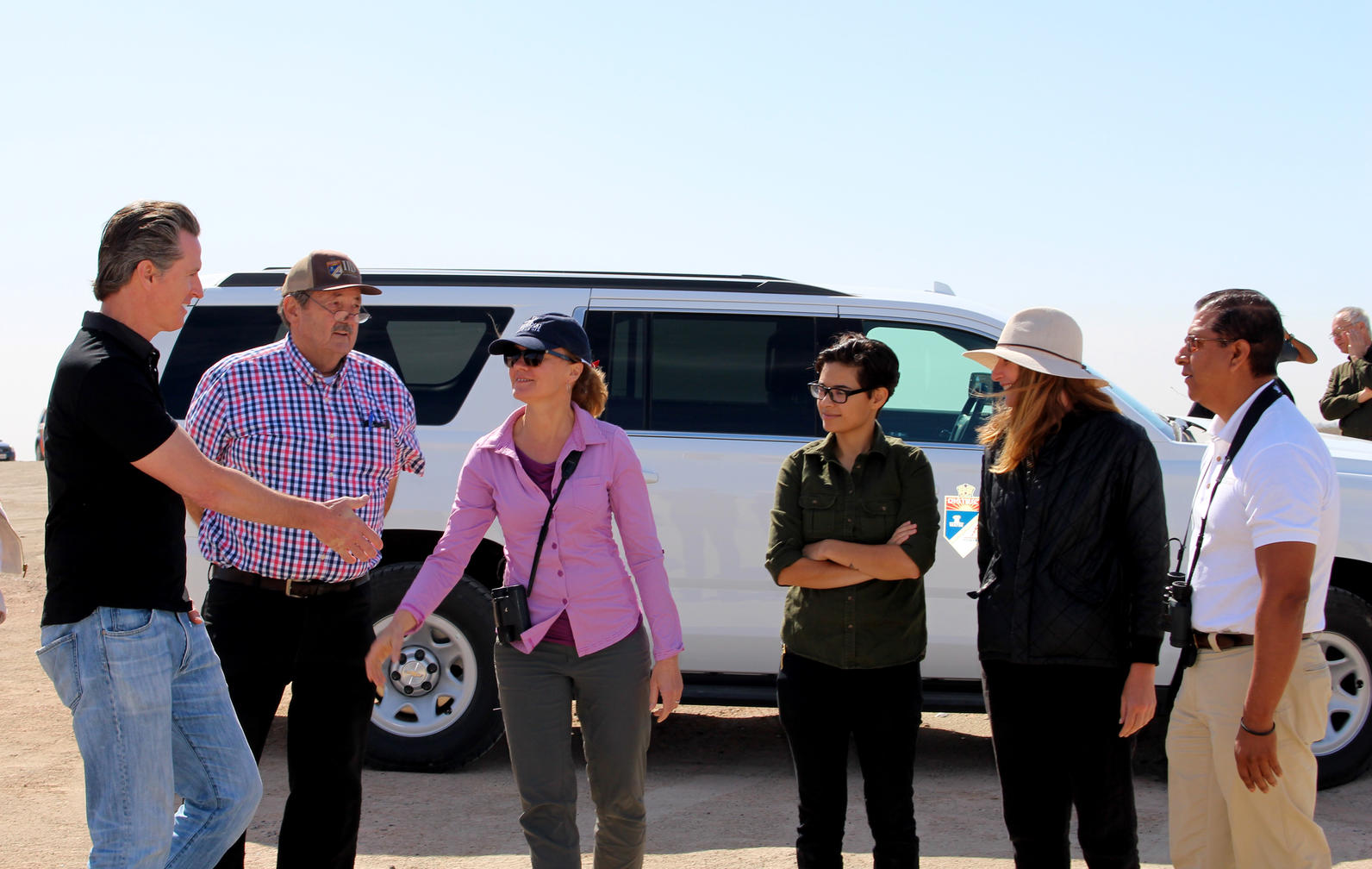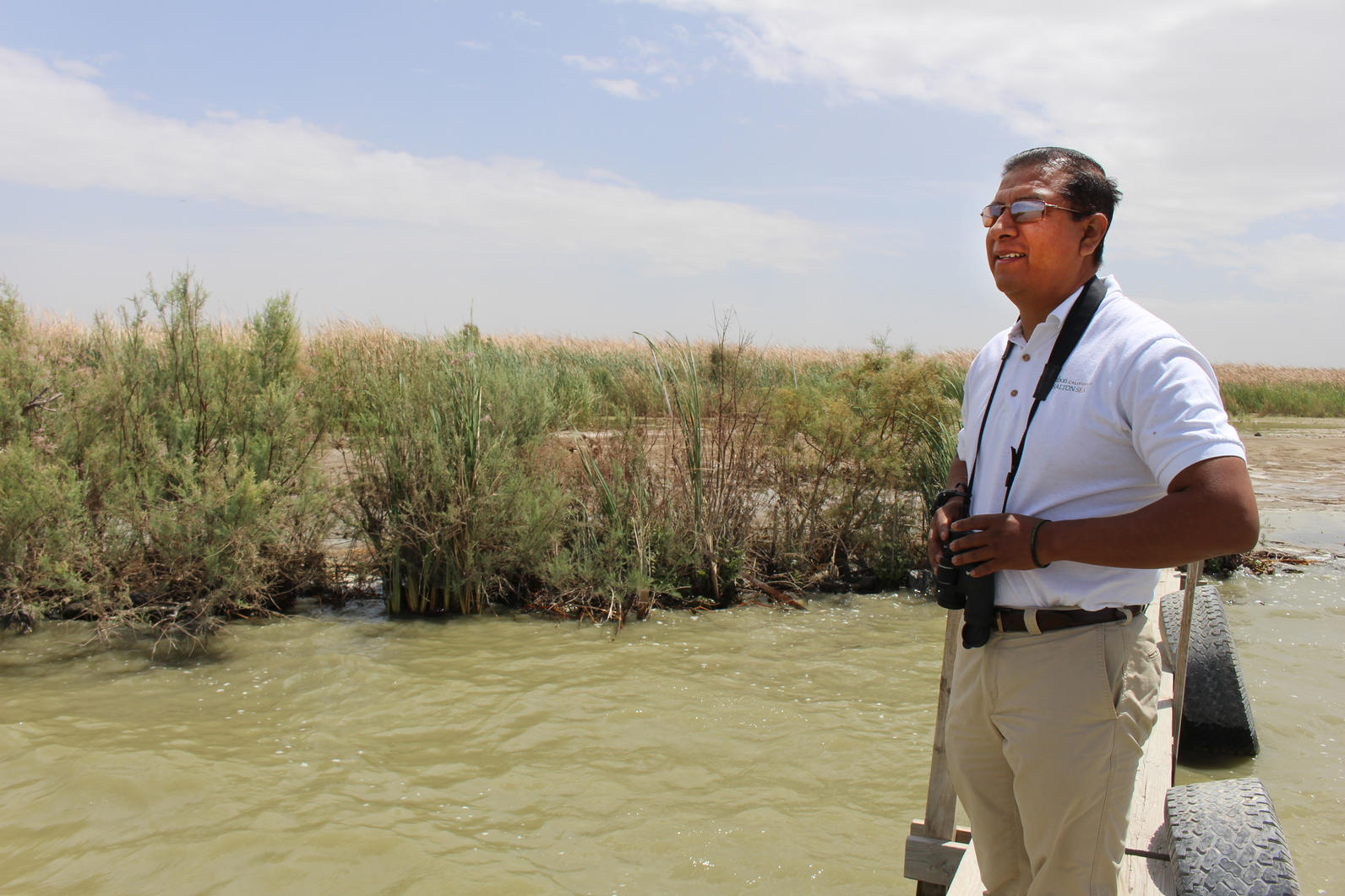
Touring the Salton Sea a couple weeks ago, we had the opportunity to talk with Lt. Gov. Gavin Newsom, who as a member of the State Lands Commission was also touring the area. Our group included Sarah Friedman and Cynthia Portillo from Sierra Club, Audubon California Salton Sea Program Director Frank Ruiz, and me. During our short meeting with Newsom we had the opportunity to talk with him about the serious environmental and public health issues at the Sea, and emphasized that the time has come for the state to fix the Sea.
The location for this conversation was perfect. We were standing at the site of a future restoration project, and watched as the strong winds pulled massive amounts of dust off the playa. There’s no way to hit the message home more than to witness the dust for yourself. We told Newsom that the pieces are there for improvement, that the state just needed to put the pieces in place and make it a priority for all of California.
Newsom agreed and pledged to address the issues that affect the local community. “I humbly submit — and it’s not an indictment — that the Salton Sea hasn’t been the priority in Sacramento that it can be and should be,” he told the group.
At one point, Newsom exclaimed, “Hey Audubon, what are those large white birds flying by -- pelicans?” Indeed they were White Pelicans, and as a bird conservationist, I was glad to see them. They’ve been increasingly hard to find at the Salton Sea this year, and they provided a great opportunity for me to discuss the plight of the pelican and other fish-eating birds. Presumably these birds were just passing through and looking for fish. It was probably the largest group of the birds we’ve seen at the Sea this season.

Aside from this group of pelicans, fish-eating birds were virtually absent during our tour. And it wasn’t a surprise. Our surveys all winter have found a lack of fish-eating birds – such as grebes, pelicans, and cormorants. The sea has reached a salinity that makes it inhospitable for the one fish that remained over the years as a reliable food source for bird, tilapia.
The Sea is clearly in transition. The shorelines, everywhere we stopped, were ringed with shorebirds of all varieties, including Western Sandpipers and Sanderling. April is a key migration month for shorebirds, coming from their wintering grounds as far away as South America on their way to their breeding grounds in the Arctic. So, these birds are hungry and the stop at the Sea is vital for their migration – giving them a chance to rest and fatten up on the salt-tolerant insects along the shore. I was pleasantly surprised at one stop to see Snowy Plovers – a local breeding shorebird – scurrying across the playa – almost completely camouflaged. And then even more surprised to see cottonball sized versions – chicks!
Usually my trips to the Salton Sea are mostly about counting birds and reflecting on the sometimes odd beauty of the Sea, watching birds streaming by in formation across the Sea, and the taking in the beautiful mountains that frame the Sea. This time we visited residential areas around the area and experienced firsthand what it’s like to be absorbed in clouds of fine-particulate dust and witness the lack of wildlife.
A couple weeks later, I’m still picking dust out of my eyes.

Andrea Jones is Audubon California's director of bird conservation.
By Andrea Jones
Monthly Giving
Our monthly giving program offers the peace of mind that you’re doing your part every day.




